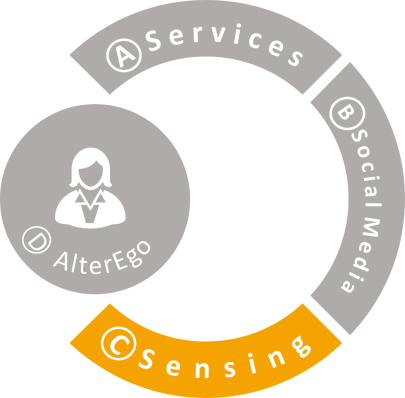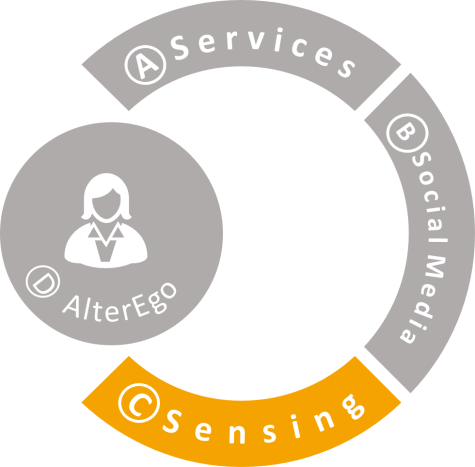In research area C, two classes of sensor-augmented networks are differentiated: Those that are closely connected to humans and those that are in the surroundings of humans. Smartphones facilitate sensor technology to get close to humans and currently medical and fitness-oriented devices are coming into place, e.g., 'quantified self' or 'wearables'. These devices actually offer more than only sensor-based data acquisition: Actuators affect users and their surroundings, for instance, with implanted insulin pumps or exo-skeletons, and are usually connected to the Internet.
The second sensor class investigated in research area C is rendering human environments such as spaces, cities, and infrastructures more and more into 'smart spaces'. Both developments have dramatical implications for privacy and information-centered self determination of the users. The first development increases the transparency of users – in the sense of a surveillance society. Also, actuators are enhancing attractiveness for malicious or harmful actions. The second one concerns legal aspects of sensor data. Often, data from 'smart spaces' is not directly associated with a person and therefore not subject to data protection. However, in a lot of situations, this data needs to be protected in later processing steps, which might be impossible then. Moreover, in both cases, basic principles of prevalent big data solutions are in conflict with policies of appropriate data storage. Obviously, there is a strong interdisciplinary legal perspective.




